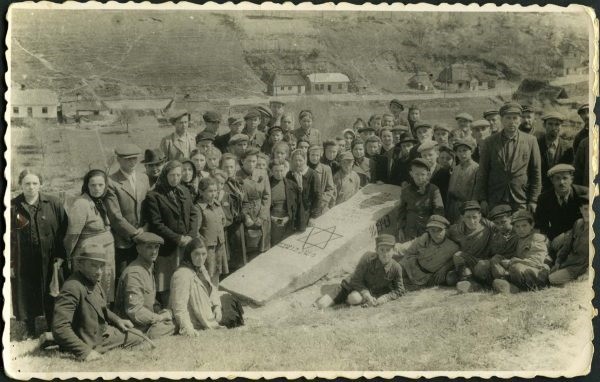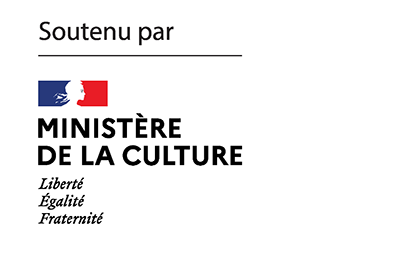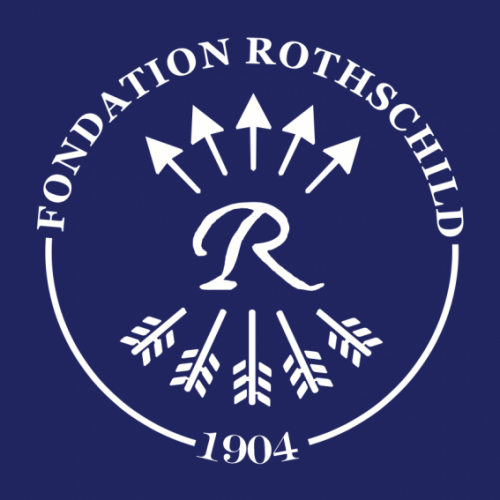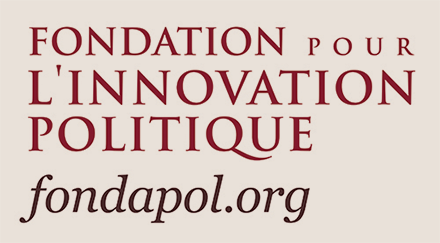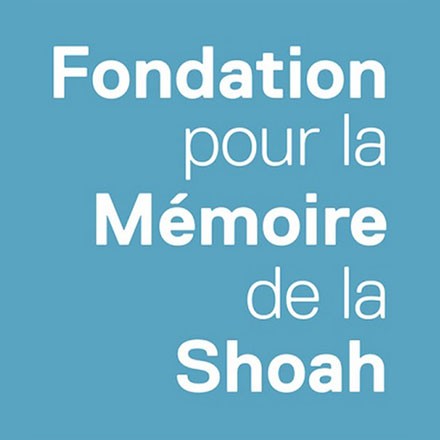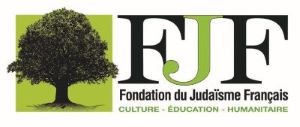From the day after the massacre on October 7, archiving and documentation work began, reflecting a first effort to elaborate and integrate the magnitude of the event into everyone’s consciousness. This work of immediate memory is part of a collective imagination and a set of testimonial practices that trace the history of both the Holocaust and the pogroms. Sensitive to the ambiguity of Israeli society, Frédérique Leichter-Flack examines the effects of this intertwining of memories of the massacres, between traumatic reliving and a resource for avoiding being stunned by the Gorgon.
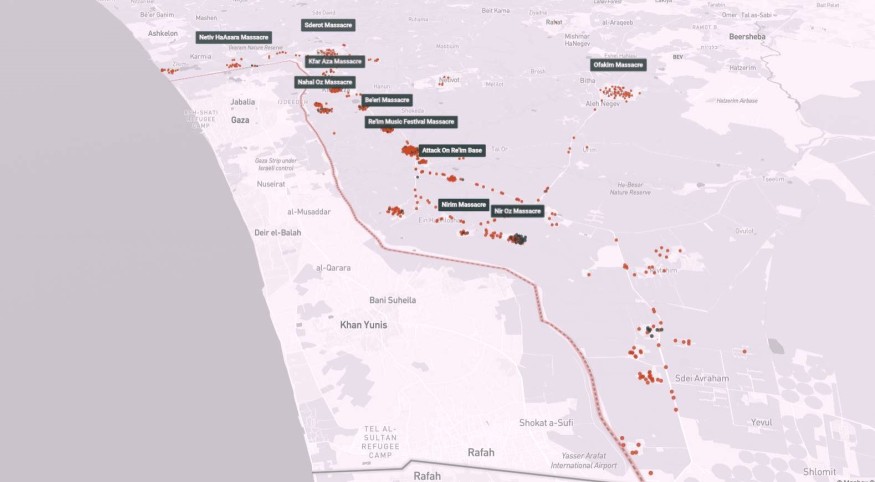
The October 7 massacre has been and will continue to be progressively revealed. It took several weeks, as the many bodies found in the villages and fields of southern Israel were gradually identified before we were able to put a number on it, which still varies a month after the event.[1].
We are now starting to see more clearly the unfolding of the operation, the acts of violence committed, and the methods of killing. Even though the result is still approximate, it is becoming possible to provide a kaleidoscopic account of the various massacres that occurred simultaneously in different places and to offer a kind of retrospective report, as several major newspapers have undertaken in recent days.
Immediate archives
Actually, few massacres in the recent history of the world are more factually documented than the one committed on October 7 in Southern Israel. At this stage, three main sources have enabled the reconstruction of the event.[2].
The first is the video footage shot by the Hamas men themselves, with their cell phones, those of their victims, or the GoPro cameras they had equipped themselves with. These were the first documents to circulate, almost in real-time, on social networks, at the same time as the cries for help received on WhatsApp by the families of the kibbutzim residents trapped in the shelters of their invaded homes, also broadcast live, sometimes on national television. Recorded and broadcast with the aim of terrorizing the Israeli population, the videos were also a unique instrument of psychological torture, since families were reduced to identifying through these images loved ones of whom they had no news, trying to guess their fate by looking for a sign of life.
The second source of documentation of the massacre is the set of traces left at the scene and on the bodies gradually discovered on-site. Decrypted by forensic teams working on the spot for several weeks to identify the victims, these traces allow reading abuses suffered by the victims on their bodies. More broadly, the spectacle left by the massacre once carried out—or what remains of it after the killers left—was directly witnessed by a large number of Israelis, including young military personnel and rescue teams, often unprepared.
The third archive of the massacre is the collection of testimonies from survivors and first responders. The day after the massacre, a multitude of spontaneous initiatives emerged online from civil society and especially from young people and students at Israeli universities. Recording the testimonies of witnesses, publishing them on Instagram pages, subtitling them, sometimes in several languages, while almost all the testimonies of survivors and rescuers are obviously in Hebrew, such was the urgency that imposed itself and was solemnly shared in a country entirely in shock. Due to the proximity of relationships and above all the immediacy of social networks distributing images and sounds, almost everyone found themselves to varying degrees in the position of witness of the massacre, with the psychological consequences one can imagine for an entire country.
This reflex to collect the testimonies of the survivors, to turn them into a collective emergency at the very moment when the massive displacement of populations from the south and the sudden military mobilization of a large part of the youth left the country in chaos, and to turn them into a kind of improvised memorial to the events of October 7, goes far beyond the challenge of letting the world know what had just happened. The goal, of course, was to share the sense of horror and astonishment, to evoke empathy through stories, faces, and voices, and, if possible, to gain a little understanding and support from the rest of the world. There was also the desperate attempt to make sense of the unimaginable, to absorb the shock of this impossible event that had nevertheless happened. But there was also something else, as if another memory, that of the Holocaust, had inserted itself like a spontaneous intertext. This memory was particularly disturbing for the few surviving inhabitants of the martyred kibbutzim, who had actually experienced the massacre of their neighbors and friends in the depths of hiding places and locked shelters, seeing nothing outside but trying to guess what was happening.
The superimposition of the memory of the Holocaust
Collecting initiatives bear the hallmarks of Holocaust testimonial literature and, beyond that, of the testimonial culture of a society accustomed to hearing former camp survivors tell their stories in schools. In a country where testimonial literature and the oral narratives of Holocaust survivors are familiar cultural realities, especially among young people, the codes of these corpora and practices of transmission of the founding trauma were immediately proposed to take charge of the new collective trauma. A whole section of Israeli society had projected itself into a postmodern vision, technophile, open to the world, sure of its strength and existence. Suddenly it found itself back in the tortured identity of the years of the founding of the state, in its “seven million” complex, in a perception of itself as an assembly of survivors, as if the efforts accumulated over 75 years were ultimately incapable of preventing the return of hatred and massacres. For the survivors left to fend for themselves in their hiding places, and for the relatives of the victims who helplessly received live calls for help from the shelters that were about to be assaulted, there was also the dread of abandonment—the long hours of first believing the arrival of the army imminent, then confronting the anguish of being delayed by the unleashing of death around you, and admitting the reality of the absence of help you could count on. This anguish is also very much present in the testimonies of the rescuers who arrived on the scene too late—too late, for example, to save the terrified little girl who was left to bleed to death alone for too long amid her murdered family, as one of the rescuers told the camera, unable to hold back her tears.
With this more or less explicit superimposition of the Holocaust memory (“never again is now,” we saw on social media posts), other functions of testimony, well known in the corpus of testimonial literature, also came to the fore. With the phrase “survived to tell,” the title of one of the Instagram pages that set out to collect testimonies of the massacre, the link between survival and the promise to testify reminds us that the survivor who tells his story is also always fulfilling a kind of unspoken promise, that of speaking for the dead, of keeping alive the memory of their names and of the irreparable injustice done to them. This is the mission of the survivors, the debt they owe to their murdered friends who did not have the chance to escape and who sometimes heroically intervened to save other lives at the cost of their own. In the culture of remembrance of the Holocaust, the discourse of the survivors also fulfills another function that could be described as prophetic—having returned from hell, they have experienced what no human being should have to endure. Their horror is commensurate with this unnatural unveiling. They have seen the face of the Gorgon, as Primo Levi put it. They know what man can do to man. How can they live with the secret they now hold? And how can they go on living without trying to warn those who have been spared?
The testimonial literature on genocide and mass slaughter lifts a corner of the veil on a whole aspect of the victims’ experience that the traces or material archives of the crimes cannot reach—the moral experience, the ethical dimension of the interactions between the perpetrators and their victims on one hand, and between the victims themselves on the other. What did these people, hiding in the depths of their shelters or stashes, feel when receiving alert messages on their phones, hearing the cries of their neighbors? At what point did they realize that what was happening had nothing to do with anything they had experienced before in terms of warning and danger? What ethical or emotional blackmail did those who opened the door of their shelter to the perpetrators yield to, in the hope of sparing other lives? What sacrifices were they willing to make, those who tried to intervene in the vain hope of saving their child or spouse? The interaction with the perpetrators often constitutes, for the survivors of extermination who agree to speak, the greatest enigma, especially when the killing was slow and painful, cruel and torturous.
Even if the comparison has its limits, the detour through the accounts of the surviving Tutsis collected by Jean Hatzfeld in his first book on the genocide in Rwanda[3] is of great interest here because it helps to grasp the specific problem of excessive cruelty, an element that, according to the evidence gathered, also characterized the October 7 massacre. The survivors of the Rwandan swamps all address, at one point or another in their testimony, the problem of cruelty beyond the massacre itself—What to make of the cruelty? of the torture? of the sadism of the methods of killing? That one might want to kill, that one might even do so effectively, remains within the realm of the conceivable. But to cut off the arms and legs of a child and then abandon it to a slow agony? To cut open the bellies of pregnant women before executing them? What are we to make of the additional suffering, both physical and psychological, and the dehumanization inflicted on the victims, and how do we deal with it? The testimony of the survivors and the first responders, in its own way, takes up all that the forensic investigation finds and doesn’t know what to do with, in the form of a gap designated to the gaze and that will never be filled.
In the case of the kibbutzim massacre, the availability of the other archives, that provided by the perpetrators themselves in their videos, further accentuates the enigma. Unlike the Nazi Einsatzgruppen, who concealed their actions because they knew full well that what they were doing was horrific and would be perceived as such by common sensibilities, Hamas terrorists filmed themselves. Can it be, then, that these men did not perceive their acts of rape, torture, and murder of women and children as a cause for horror and shame, even for their own children if they were to see them? Could they have believed that they had nothing to hide and that their families could be proud not only of their actions but even of their gestures, that their immediate civilian environment would approve, not only of having killed but also of having killed as they did? The shock of common decency in the face of the celebrations that these monstrous acts elicited discourages any attempt to try to understand. And yet, is it not crucial for the social sciences to undertake this work before fiction, always eager for sensationalism when it comes to mass murders and executioners, rushes into the empty space?
Questions for the social sciences
The social sciences that focus on mass violence teach us that, contrary to common belief, it is not always difficult to kill. On October 7, the videos of the killers seem to show that it wasn’t at all. But what models can we invoke to interpret the excess of cruelty and the intoxication that seems to have accompanied it? Were the rapes, tortures, mutilations, and body desecrations all planned, as the documents found on certain Hamas fighters seem to indicate? Was it a mission for hire, down to the precise details of the crimes committed? Had the killers drugged themselves in anticipation of carrying out their acts in order to block out all emotion and harden themselves? Or did the fanatical ideology that drove them suffice to make them lose sight of the fact that they were inflicting this on human children? Were those who came to carry out their deadly mission aided by civilians who seized the opportunity to follow them into the breach and, intoxicated by the power on offer, tortured, raped, and massacred in the same opportunistic way one might plunder with opportunism? What role did mimicry of images popularized by international jihadism play in preparing the killers? And what other role did a certain religious discourse of holy war and martyrdom play, capable of justifying even the desecration of the corpses of civilians and the beheading of children? What exactly happened on the spot, in the seconds, minutes and hours when the victims were delivered defenseless to their executioners? What to make of the exhilaration, intoxication, and joy of the perpetrators?
If there isn’t a single relevant framework that imposes itself on the mind in interpreting the massacre, it is probably because several must be blended. It is to this task that the attention of the social sciences must be directed, given the challenge posed by the various archives of the massacre. However, the questions raised by the description and interpretation of the massacre in all its concreteness remain largely unanswered. Needless to say, there are many ways of avoiding seeing and refusing to know what happened in southern Israel—from accusations of lies and fake news widely circulated on social media, culminating in the worst denialist mockery[4], to disputes over details, such as the controversy over the exact number of “beheaded babies” in the kibbutzim. But for many of those who do not deny the objective fact of the massacre, what matters most is to prevent it from serving as an objection in the broader struggle, of which they prefer to consider it just one episode. In the ethical demand to face the massacre, some see only an attempt at incrimination, a propaganda effort, or even a project to legitimize another massacre in return. And others, determined to remain blind to the facts, will not hesitate to give their general support to “all means” of the fight against oppression, without delving into details, or, better still, to boldly dismiss any sentimentality, as the cold mockery of decolonial thought has quite clearly invited us to do (“Not like this? Then like what? Show us lol”[5].
But even the dialectical software of the massacre still says something more about it, implicitly—it cannot completely ignore the grids of interpretation of extreme violence, whether it is conceived as a burst of revolt against humiliation or understood as a carefully thought-out, coldly assumed, and perfectly rational tactic on the part of the weak who resorts to the only weapon at his disposal, namely, the willingness to display a total absence of moral limits as a form of determination. The violence of the massacre is then either excused (rage and hate being “understandable” in the context) or justified (horror being the only weapon of the oppressed). In both cases, it remains subordinate to the cause it claims to serve, leaving no room for another hypothesis, which nevertheless deserves exploration—the hypothesis of a hate crime and, more specifically, the genocidal fanaticism of an anti-Jewish violence that would not be subsumed under the cause it claims to serve[6].
The imagery of the pogrom
For the victims, on the contrary, it is precisely this interpretative framework, the hypothesis of exterminating antisemitism, which decolonial thought leaves in its blind spot that has immediately asserted itself. Let us return, indeed, to the testimonies. Besides the intertext of the testimonial culture of the Holocaust, a second intertext has spread to the point of becoming the privileged metaphor for designating the event—the pogrom. In the Jewish imagination, the modalities of the October 7 massacre have reactivated the transgenerational traumatic memory of pogroms, a legacy common to Jews of the diaspora and Israelis, who have constructed themselves precisely against this memory and in reaction to it—this is the other sense of “never again is now.” Of course, it was not strictly speaking a pogrom. The pogrom is what happened in the Tsarist Empire when Jews had neither a state, nor an army, nor police to defend them when they were entirely at the mercy of their tormentors. And in terms of the number of deaths, the October 7 massacre far exceeded the experience of a pogrom. But what does the invocation of the imagery of the pogrom convey, beyond extreme violence, cruelty, barbaric rapes, and mutilation of bodies? It conveys vulnerability, powerlessness, and abandonment. And it conveys shame. The shame of what has been done to you and what has been made of you. The shame of what has been done to your loved ones, and the shame of your inability to prevent it. The shame of the mother who could not protect her daughter from rape. The shame of the brother who could not protect his sister from evisceration. The shame of the father who could not prevent his children from being burned alive, hands tied behind their backs. The shame of the state, which was not there when it was so vitally needed.
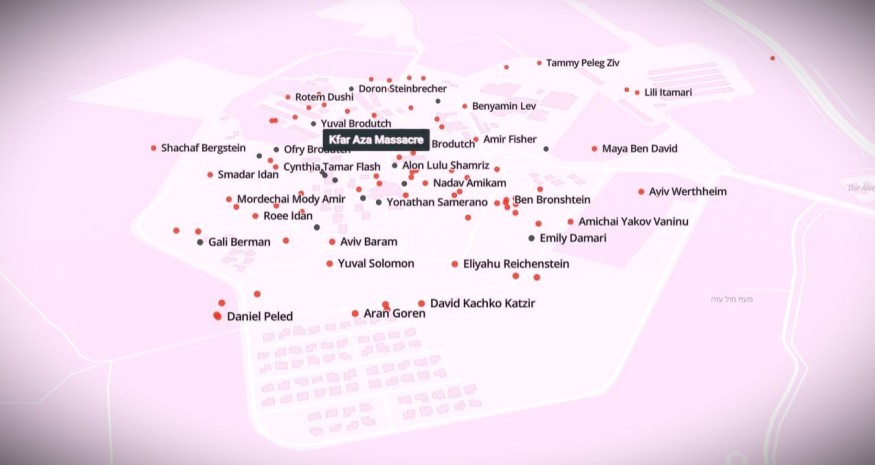
The imagery of the pogrom has been passed on in the Jewish psyche, no doubt through epigenetic channels, but it has also been taken up in a whole body of literature, the literature of the pogrom, less well known than the literature of the Holocaust, but perhaps even more difficult to read. In the short stories of Lamed Schapiro, for example, the unbearable is delivered raw, without protection, without self-pity, without sentimentality. Bodies can be tortured without anyone to protect them. One can be exposed at any moment to boundless violence, inaccessible to rationality and discussion. There is nothing to do, nothing to hope for; one cannot plead, argue, or beg. You just have to wait it out and hope to stay alive until then. The imagery of the pogrom says this—Jewish bodies are bodies that can be raped, enucleated, skinned, nailed, and dismembered with impunity. Bodies to which this can be done without anyone objecting. Hence the rage and disgust of one Bialik in his famous poem In the City of Killing written in Hebrew in 1904, and the harshness of his words—it is no longer the time for pity for our dead; we must break with the shame imposed on us and show the spectacle of horror in order to ward off the powerlessness of shame and the shame of powerlessness. One must die if one must, but by fighting not to be treated only as bodies to which anything can be done. Break the cycle—the very program on which the project of the Jewish state was conceived before the Holocaust, confirmed the vital urgency for refuge.
One cannot understand contemporary Israel without taking into account the dual memory of the Holocaust and the pogroms that feeds the collective imagery. Yes, “never again is now” is a propaganda slogan used everywhere on Israeli networks; yes, it is a cheap way to morally disqualify one’s enemy by equating him or her with the Nazis; and yes, calling one’s enemy a Nazi undoubtedly avoids having to discuss a two-state peace with the Palestinians. However, it is not just a propaganda slogan; it is also a spontaneous feeling, accompanied by confusion and fear, widely shared, and an instinct in the collective imagery. It actually carries a dual meaning—not only the “never again” of the Holocaust and the legitimization of total war against the new genocidal Hamas but also the “never again” of the pogroms, of the violence endured in helplessness, of the existential precariousness in the face of the world’s hateful violence, of this shameful exposure of defiled bodies. It’s about the pogromized Jewish condition to which Israel, after decades of distancing, has taken the risk of identifying once more. This was demonstrated to the world in an unprecedented press conference in the country’s history, showcasing the tortured Jewish bodies that Israelis had collectively become again.
The imagery of the pogrom, moreover, already carried with it many of the ethical questions that the army had to address that day, by choosing to show the images of the massacre, not all the images, but a selection of them. Against the immediacy of the images, the literature of the pogroms—like the literature of testimony on the Holocaust—had never ceased to ask itself these questions: what to show and what to tell, to warn and denounce without reproducing the rape and humiliation, to pay tribute to and defend the memory of the victims, without renewing the dehumanization and loss of dignity of those tortured? How far should the reconstruction of events be shown and how far should it be shared when the dignity of the victims is in danger of being lost? Should we go down into the torture chamber and show what happened there? How can we avoid the trap of horror porn? These questions, which necessarily led to decisions in the editing of the 48 minutes of footage of the massacre, also have a long history in the intertextual imagery of Holocaust literature and pogrom narratives.
The massacre of October 7 now risks being swallowed up in the humanitarian disaster of the war it unleashed. Yet, it is the responsibility of the social sciences to decipher its gaps based on all available archives. And it is up to testimonial literature to preserve its significance—to act as the guardian of the event should other archives no longer suffice. Their mission is also to teach us to confront the Gorgon face-to-face—beyond the shock.
Frédérique Leichter-Flack
Frédérique Leichter-Flack is Professor of Literature and Political Humanities at the Centre d’Histoire de Sciences Po.
Notes
| 1 | One month after the massacre, families of missing persons believed to have been held hostage in Gaza still receive notification of the deaths of their loved ones on October 7, as forensic work continues on human remains collected on site. |
| 2 | A fourth potential source, which, of course, cannot be used publicly, but elements of which are beginning to emerge, is the Israeli army’s interrogation of dozens of Hamas fighters captured alive in the fighting that followed the massacre. These interrogations appear to have revealed three successive waves inside Israeli territory: elite overtrained Hamas fighters on a command mission; armed Hamas fighters mobilized as reinforcements that same morning to participate in the attack; and unarmed civilians who followed them into Israeli territory to take advantage of the opportunities created by the breach (looting, participating in atrocities, or assisting in kidnappings in exchange for a promise of payment). The distribution of crimes between these different categories remains to be defined. See in particular https://www.ynetnews.com/magazine/article/hjnc0ysx6. |
| 3 | Life Laid Bare: The Survivors in Rwanda Speak, Other Press, 2007. |
| 4 | One thinks in particular of the competition of jokes provoked on the networks by the news of the baby found burned alive in the oven of a house, whose gruesome discovery was recounted by a rescue worker. |
| 5 | This is a much-liked and retweeted tweet by American fashion and youth journalist and influencer Najma Sharif. |
| 6 | This is the interpretation taken by the USC Holocaust Foundation (Spielberg Foundation), which has begun recording and archiving the testimonies of October 7 as part of its project to combat antisemitism via testimonies. |
